leadership
Awaken Your Leader Within & Lead Through The 21st Century
June 2023

leadership
Awaken Your Leader Within & Lead Through The 21st Century
June 2023
Leadership is a funny thing. It’s something we talk about all the time. We have an intrinsic feeling – “that’s it!” - when we see it. But try to define leadership… and we run into difficulty. Ask 10 different people and you're going to get 10 different answers. Even amongst experts, psychologists, leaders themselves… there is not one unifying definition of leadership.
Even without a unified definition, leadership is arguably the most important facet of our survival and flourishing as a species. Historian Yuval Noah Harari considers it our distinct comparative advantage, describing our ability to communicate and coordinate across groups as our edge over homo neanderthalensis.
On a corporate level, studies have found that poor leaders lose the company money, good leaders make a profit, and great leaders more than double the company’s profits. Leadership has a large impact on employee wellbeing and in turn retention, performance and productivity. Another study found that leadership alone is responsible for 21% of a company’s overall performance.
From Cleopatra to Xi Jinping, leaders capture our imagination. Leaders inspire us, disgust us, bring us to our feet, drop us to our knees. And as our society’s complexity and fragility are increasingly exposed, leadership will be needed to guide us through crisis.
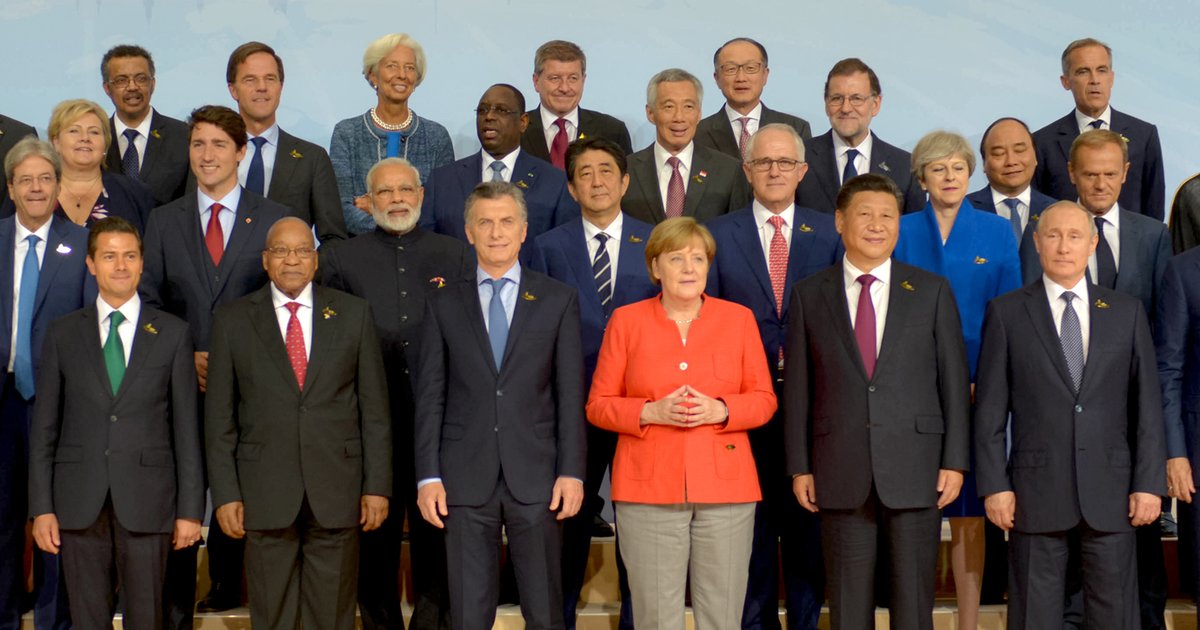
Political leaders gather from around the world.
To understand leadership, we must know:
By meeting the leader that lives within each of us, we stand ready to tackle the biggest challenges of the 21st century.
Some define leadership as a role. It is a position that can be occupied. In this model a person in a role as Prime Minister or CEO are inherently a leader. Some think a person is born a natural leader. In this model they have certain traits, e.g., extroversion, traditionally associated with leadership. Leadership can also be thought of as a social process. Leadership is something we can do. In this model, certain actions, which can be taken by anyone in any role, become leadership.
For 3Peak Coaching & Solutions and our clients, we define leadership as a process.
What is leadership?
Leadership is the conscious process of individuals and teams directing creation.
In this creative process, anyone can be a leader. Anyone can engage in a process of moving themselves towards something they want in a creative, conscious, aware manner.
To be a leader, start within.
The leader within is in contact with their own instrument - their own mind and body.
They know their own humanity and funnel all of their skills and gifts into the process of leading. To do that, a leader must be aware of their physical wellbeing, their emotions, and their thinking patterns.
“Let's not forget that the little emotions are the great captains of our lives and we obey them without realizing it.”
- Vincent van Gogh
Research has found that 75% of careers are derailed due to emotional incompetence. Leadership requires the courage to be honest with all of one’s dimensions. To understand one's emotions, motivations, desires and behaviors. All the little inputs that might steer us in a repetitive direction rather than the right direction.
A true leader has stretched themselves to understand their full behavioral capacity. They understand how to be extreme and how to be moderate. And they have the wisdom to know when to use which.
“Anyone can be angry - that is easy. But to be angry with the right person, to the right degree, at the right time, for the right purpose, and in the right way - that is not easy.”
- Aristotle
To be a leader is to integrate the past, the present, and the future. To unwind the past, act in the present, and activate the future. Thus, leaders break free from the confines of the past and create a new trajectory of growth and success. They navigate the complexities of their roles and drive positive change. Embracing this holistic perspective enables a future that holds limitless possibilities.
By looking within, a leader can then radiate out.
Many people who sit in “leadership positions” are not leaders.
In the beginning of a career, we are solely focused on the task – getting stuff done. Often this comes with a focus on technical expertise and functional skills. For instance, an accountant must learn to balance the books. Even as we are promoted to managers, we can view our job solely as getting others to go execute tasks.
The further we go up in an organizational hierarchy, the more we must drop the technical. We focus less on getting stuff done and focus more on people development. There are plenty of people who are in charge of teams who are not leaders, because they have not made the shift to focusing on people over task.
Management is a part of leadership, but leadership is not necessarily a part of management. Leadership is the umbrella.
“You manage things; you lead people.”
- Grace Murray Hopper
Leadership is always situational. The context is always changing, always dynamic. There is never a direct right or wrong answer. With every decision, a leader looks, assesses, understands, and then adapts to the situation.
A leader develops a relationship with the outer world, with their outer environment. From this space of interrelationship, we have the right information to make a good decision.
“No man ever steps in the same river twice, for it's not the same river and he's not the same man.”
- Heraclitus
Early (outdated) academic research in leadership pushed the idea that there are intrinsic or natural traits that make up good leadership. These old models say a good leader is extroverted, aggressive and conscientious. Even today, there always seems to be a new flavor of the month – authentic leadership, transformational leadership, inclusive leadership, servant leadership – each one boasting to be THE leadership model that ends all leadership models.
There are some cases where each archetype might be beneficial. But there are other circumstances where that same archetype can be catastrophic. A good leader is flexible depending on what the environment is asking of them. Not imprisoned to an ideological model that sounds good on paper.
As the situation changes so must the leader.
“The pessimist complains about the wind. The optimist expects it to change. The leader adjusts the sails.”
- John C. Maxwell
As we work with leaders and their teams, four areas determine great leadership:
Leadership is a process of moving creative energy towards something. We must point the arrow before releasing it. Effective leadership necessitates creating direction, which can range from pointing out a simple goal to creating a disruptive vision.
When it comes to creating a vision, the best data in the world will alone not suffice. For effective leadership, data and intuition must meet. A good leader needs the wisdom to know when to be analytical and when to use intuition to guide oneself.
Vision is an inner knowing. Inner knowing becomes clear with one can sit creatively in silence and let the truth blossom from within. This sense of vision often emerges from a place beyond the analytical mind. From this inner blossoming we get an Albert Einstein; we get a Steve Jobs. True vision is one of the more spiritual elements of leadership.
Although in competition, in 1911 British explorer Robert Falcon Scott and Norwegian explorer Roald Amundsen shared the same vision – to be the first man in history to reach the South Pole. Something within compelled them to make this treacherous exploration.
But while the two shared the same overarching vision, the direction they set would be the difference between victory and death.
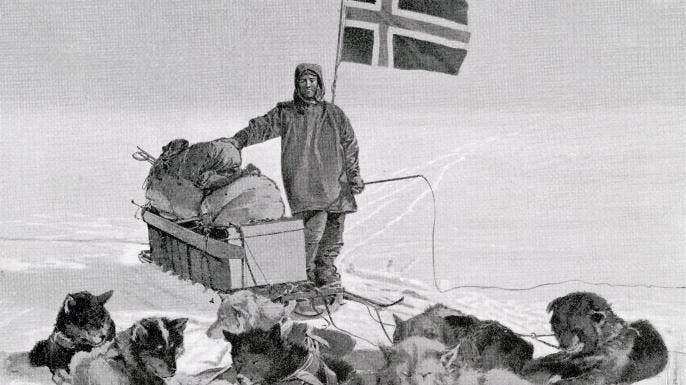
Captain Roald Amundsen prepares to race to the South Pole.
For Amundsen, his focus was singular – get to the South Pole and back safely. Every decision was passed through these criteria. To do so, he continuously adapted his approach – minimizing the men (5) and supplies needed, learning from indigenous Inuit to use sled dogs, dress in furs, and eat raw penguin meat to ward off scurvy. When the temperature dropped too low during his first attempt, he retreated and waited out the storm to try again. Amundsen’s vision may have been to reach the South Pole first, but the direction he set to get there – the strategy he employed – focused solely on efficacy and safety above all else.
Contrast this with Scott, who along with reaching the South Pole, also had other priorities in mind. Scott also wanted to conduct scientific research. (Amundsen would retort, “Science would have to look after itself.”). To carry the weight of his equipment he needed 16 men and a proportionate number of supplies. He also held a value around decorum – racing in a “gentleman’s manner”. He viewed using dogs and skies as unsportsmanlike. Despite advice to the contrary from Amundsen, Scott instead opted to use Manchurian ponies and motorized sleds. Scott also prioritized respecting traditional British dress wear – relying on wool clothing for warmth. In short, his vision was clouded by a variety of competing priorities.
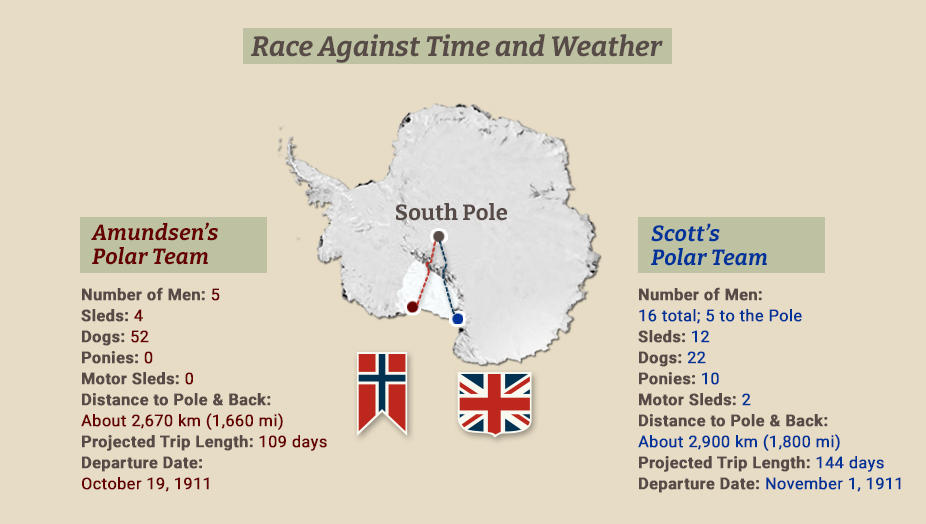
Amundsen and Scott choose different strategies.
In leadership, we must use both a compass and a map. A compass will always point true north; it will always give us the right coordinates. This is our sense of vision. But if we walk in a straight line, then we're going to run into trees, into rocks, into swamps, off a canyon, off a waterfall. Blindly thrusting forward towards north.
A map shows us the landscape: maybe we need to head west for a little bit to go around the river. Maybe we have to go southeast to avoid the fallen tree. A map helps orientate us. It takes in the information of the environment; it takes in data. This is our sense of direction.
In the case of Amundsen, he chose to use both the compass and the map. With intensely defined priorities, proper preparation, and a willingness to adapt, he described his second attempt as “effortless”. Even along the way, they “took an untested route that forced them to navigate a frozen maze of crevasses, mountains and glaciers.” But by December 14, 1911 Amundsen succeeded in being the first man to reach the South Pole. His team briefly celebrated, and out of an abundance of caution, quickly turned back. “The goal was reached,” Amundsen wrote, “our journey ended.” They returned to base camp safely.

The race to the South Pole.
The journey turned out much different for Scott. The ponies quickly froze to death and the mechanized sleds broke down. Without dogs or skis, the men were forced to move all the equipment on their own. The wool clothing absorbed their sweat but didn’t ventilate properly. Soon frostbite began to terrorize the group. Malnourishment ran rampant. Their slow, inefficient march wasted precious time. Yet on and on they plodded, hellbent on reaching their goal. They finally reached the South Pole on January 17, 1912 – more than a month after Amundsen. Their spirits broke upon seeing the waving Norwegian flag.
The return trip can only be described as hell. With weather conditions deteriorating, the men started to die one by one. One severely frostbitten man told the remaining group, “I am just going outside and may be some time.” He left the tent and vanished, never seen again. A few days later, Scott wrote in his diary, “We shall stick it out to the end, but we are getting weaker, of course, and the end cannot be far. It seems a pity, but I do not think I can write more.” This his last journal entry - found many months later. Scott and all his men died never reaching base camp.
The direction we set matters – it matters for ourselves, for the people we lead, and for the results we seek to accomplish. Taking action in the present must include resolving any lingering issues from the past. Simultaneously, by looking into the future, we can set goals and take steps to shape the outcomes we desire.
This is the job of the leader – to set the course, set the priorities, set the strategy. The difference between doing this well or poorly is the difference between success and failure.
“With sufficient planning, you can almost eliminate adventure from an expedition.”
- Roald Amundsen
By 1979, the San Francisco 49ers were the worst team in the National Football League. One writer argued they were the worst team across all professional sports. The organization was in complete chaos: the former general manager had gutted high-quality administrative and athletic talent and had hired and fired three head coaches. Even worse, he mortgaged away chances of future success to acquire the arthritic and overweight OJ Simpson.
Yet within 2 years, the 49ers would win the Super Bowl championship. Over the next 14 years, the 49ers would win 5 Super Bowl championships, becoming one of the most elite sports dynasties in United States’ history. Their astonishing turnaround was due to one man - their new general manager and head coach - Bill Walsh.
Bill Walsh had an obsessive fixation with getting the right people, in the right jobs, doing the right things. In our experience working with clients, this simple adage is incredibly difficult to execute well.
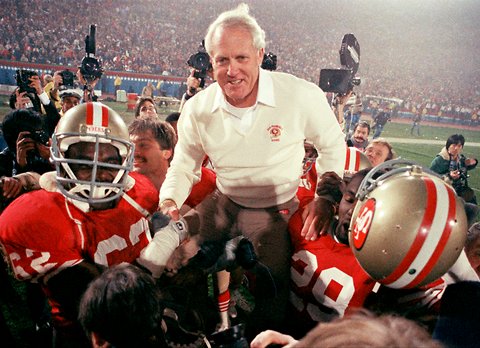
Bill Walsh and the 49ers win the Super Bowl.
Bill’s philosophy was best captured by his oft used catchphrase: “the score takes care of itself.” Put the right people in the right place; teach them how to execute their job. Don’t look at the score. Don’t worry about time remaining. Do your job, and the score will take care of itself.
To execute on one’s vision, a leader must convert their strategy into a system. A system consists of functional roles. It is reproducible and scalable. When all the roles are doing their job, the system outputs success.
Roles come before people. First define what is needed; then hire the right person for the job. Roles must have clear definition, expectations, and goals. They create a container that constructively focuses an individual’s behavior.
Bill took this seriously:
“He had written a series of lectures for each department detailing what he expected in all ways – appearance, attitude, performance, and more. He had it written out in detail for scouts, assistant coaches, equipment men, groundskeepers, and trainers. Even secretaries got specific and lengthy instructions from Bill himself.”
Behind this was not a need to micromanage. Bill was direct in explaining the functional requirements of each role, equipped his personnel with skills, then left them do to their jobs.
Without this clear definition, things fall apart.
Our clients often call us in a state of chaos because they haven't studied or mastered this principle. They forsake their role to micromanage. They reward “scrappy flexibility”, bending until one breaks. They are missing roles altogether. When roles are missing, everyone runs to fill the vacancy. Like little kids, they kick the ball and all go chasing.

In a mature organization, people don’t leave their position to run after the ball. Covering for missing roles may be a short-term “fix” but eventually leads to confusion, burn-out and retention issues.

Allowing a missing role – and the failure of the system – to become apparent provides leaders the information they need to make real changes. Do not blur the lines, do not ask employees to be half-half between different roles. Create role definition and have the discipline to see if the system works. A shitty system cannot scale; the drag forces will cause the organization to implode.
Consider once again how much effort Bill took to explain roles:
“Meetings were held, and he would take an hour or two with every employee so they knew exactly what he expected of them, what he wanted them to do and how he wanted them to do it. He made this very clear. There was no confusion in their minds.”
When it came to the athletes, he was extremely precise – drawing up plays to the inch and teaching players to execute them with exactness. He would say of his play designs:
“Passing routines were designed down to the inch and then practiced until the receiver learned how to be at the exact inch at the exact moment the ball arrived. On paper my diagrams resembled detailed architectural drawings. And they required the same exactness in construction – execution – that a good contractor brings to building a skyscraper.”
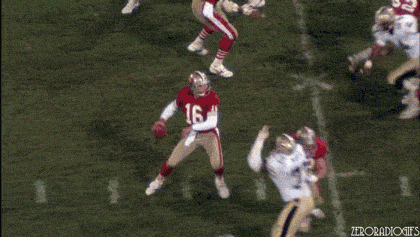
Joe Montana connects with Jerry Rice.
Far from celebrating mere rigidity, Bill relied on structure to enable creativity. He was precise so that players had room to be creative after they caught the ball. Considered the most innovative mind in American football in the last 50 years, he “moved NFL football from the Stone Age to the 21st century”, transforming the game from “checkers into chess.”
His admiration for role execution takes on a poetic if not spiritual tone:
“One player, a guard, for example, making every small move perfectly on a play is a little work of art that I can watch on tape over and over again with satisfaction. Imagine then, when on a single play each one of our players does his job exactly, perfectly, totally right. It can be breathtaking. If it scores a touchdown, the points are almost incidental.”
Get the right people, in the right jobs, doing the right things. And the score will take of itself.
“Running a football franchise is not unlike running any other business. You start first with a structural format and basic philosophy and then find the people who can implement it.”
- Bill Walsh
Once vision, direction and structure are set, a leader must coordinate the activity between their people. If everyone is in their role doing their job, they must know how to relate to one another. To do that, communication skills become the bedrock on which cooperation and coordination are built.
Martin Luther King Jr. was the most hated man in America. At the time of his assassination, 75% of Americans disapproved of King. There seemingly was not a single group that liked the revolutionary organizer.
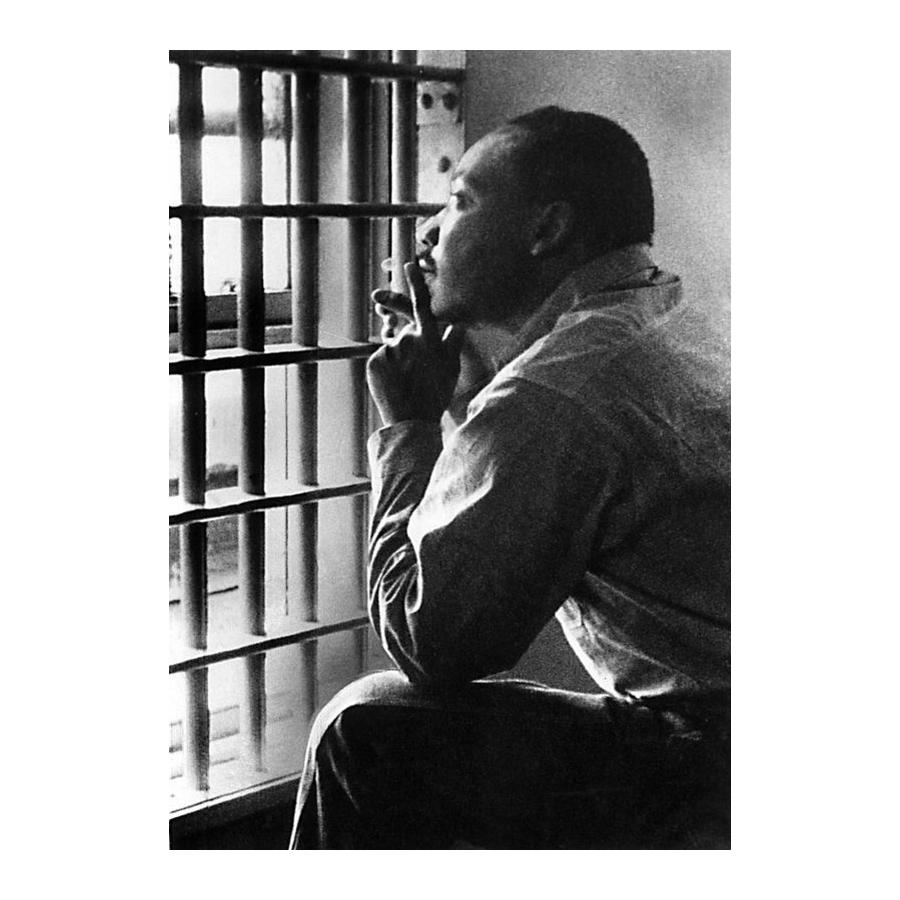
Martin Luther King Jr. is imprisoned for non-violent protest.
The government hated him: the FBI relentlessly pursued King and President Lyndon Johnson cut off all communication with King. The white electorate was vehemently against him. Even other black organizations mistrusted and denigrated King. More militant activists rejected King and labelled non-violence as soft. Student activists (such as SNCC) deeply distrusted him. The organizers of the famous sit-ins (CORE) alleged King was just after attention.
Despite these criticisms, King orchestrated some of the most important legislative changes in United States history. The Civil Rights Act of 1964 prohibits unequal voter registration requirements, finally enfranchising black voters. The Immigration and Nationality Act of 1965 removed de facto discrimination against Asians and Eastern Europeans. The Voting Rights Act of 1965 allowed the government to properly enforce the 14th & 15th Amendments in a reversal of Jim Crow. And the Civil Rights Act of 1968 guarantees the right to vote for Native Americans. All told, Civil Rights legislation removed major obstacles for all non-white groups to vote in elections.
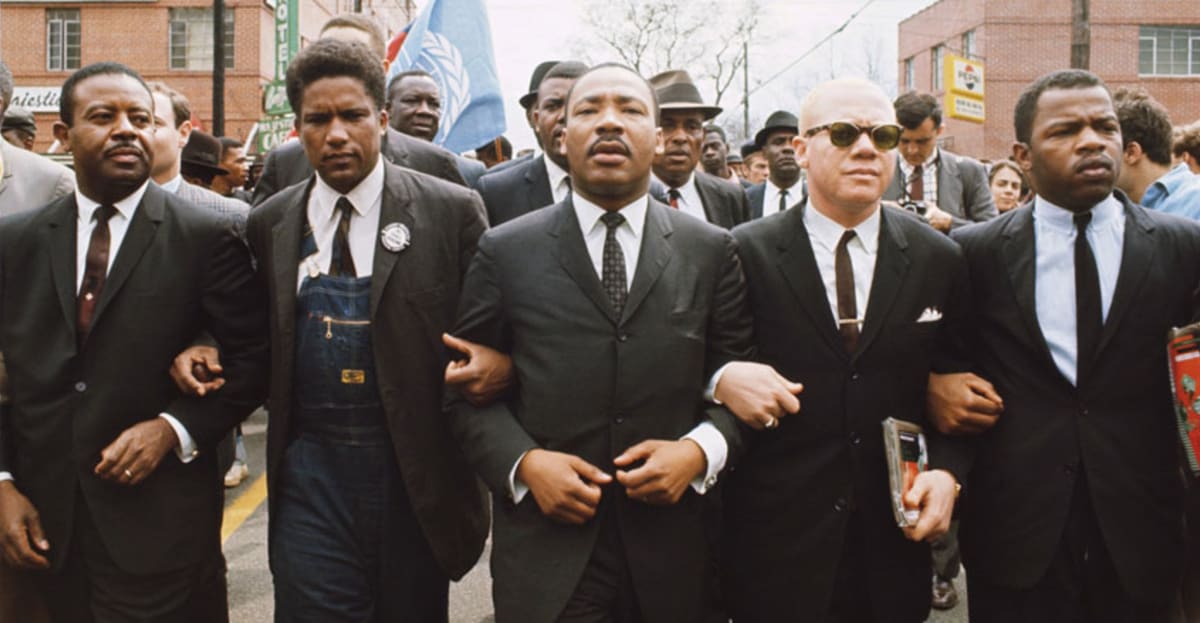
Marching after building coalitions.
How was a perpetual pariah able to orchestrate so many different organization – all of whom had different aims – to change a country from an apartheid caste system into an actual democracy?
Coordination is built on the backbone of communication. Good communication starts from a place of honesty. First, one must be honest with themselves. Honest about what one is feeling and how those feelings might drive behavior. How positive emotions might fuel excitement that leads to overactivity, how negative emotions might lead to anger, aggression, fear (which lead to poor decision making).
To put it very simplistically, there is the positive mind, the neutral mind, and the negative mind. The positive mind is filled with excitement and pleasure. The negative mind is filled with aggression and fear. The neutral mind is a special space between – where emotions do not cloud decision making. Good decisions occur from a neutral mind.
See if you can identify how King’s 6 principles to non-violence influenced his ability to communicate:
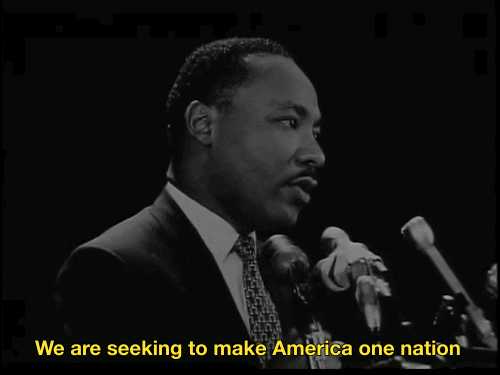
These tenets were practiced and practiced and practiced. CORE - and later King - would hold nonviolence training seminars, some up to a month long. They “learned to organize, conduct a demonstration, negotiate, and deal with the media.” Further, “they role played the physical and verbal abuse they would receive when they sat at a segregated lunch counter, learning how to nonviolently resist the impulse to run or fight back.” These seminars helped to develop the neutral mind.
Between training his mind and body to maintain the neutral mind, his emphasis on understanding the other without judgment, and his inner understanding of emotions, King had all the component pieces to have honest, compassionate conversations with every person. He is rightfully celebrated as one of the greatest orators in history; he should also be recognized for his tactful person-to-person communication ranging from the White House to other black organizations to the white moderate citizenry watching horror on their TV screens. By working with everyone, even while they hated him for it, he was able to change a nation.
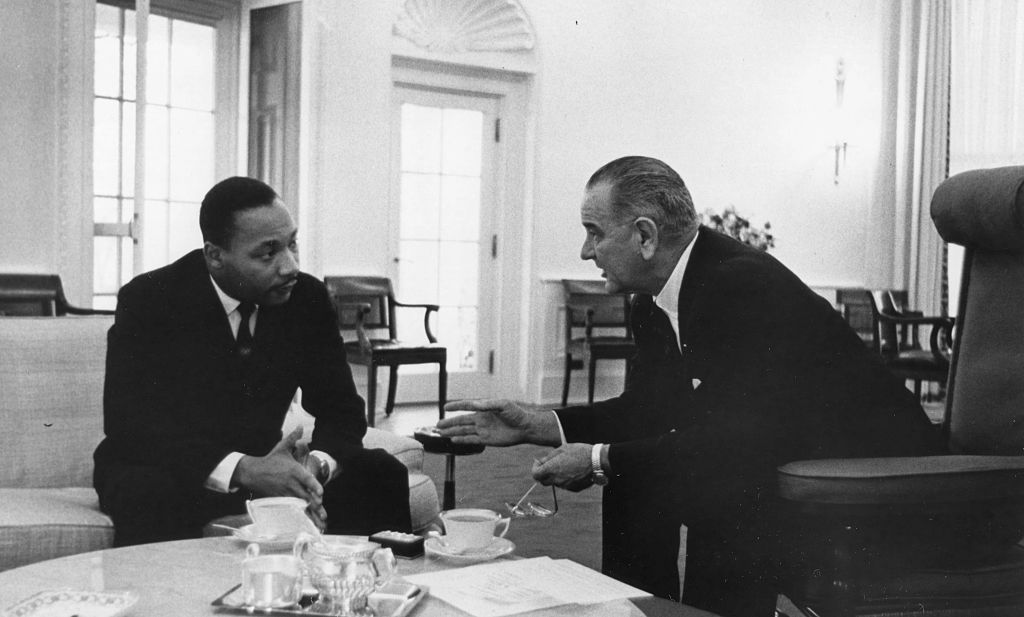
Martin Luther King Jr. meets with President Lyndon Johnson.
A true leader understands their own motivations and behavior. They learn to actively listen. From good listening, transparent and honest communication can then flow. Only through communication do we coordinate and cooperate.
"Men often hate each other because they fear each other; they fear each other because they don't know each other; they don't know each other because they can not communicate; they can not communicate because they are separated."
- Martin Luther King Jr.
Whether in a nation or in an organization, politics, power games and resource hoarding create organization schisms and war. When employees only see their individual benefit or the benefit of their function over others, the overall organization will suffer.
A leader’s core responsibility is to unite the whole. To unite the whole, one must healthily detach themselves from their own self-interest and look to the health of the entire entity. They must serve the long-term health of the whole organization without taking sides.
A leader must truly understand all their stakeholders. They must have an awareness of how the organization relates with the outside world in a healthy manner. How they are managing natural resources, how they are relating with communities and customers. A leader creates healthy relationships within an organization and outside of the organization.
In 2019, New Zealand experienced two consecutive mass shootings in a terrorist attack on mosques. 51 people were killed and 40 were injured. Following the tragedy, Prime Minister Jacinda Adern led with honesty, compassion and action. She spoke to the grief of all of New Zealand, wore a black head scarf, and opened her address to parliament with the Arabic greeting of “As salaam alaikum.” She visited Muslim communities and asked what they needed of the government (rather than assume or tell them what she thought they needed). She took action against Facebook and big tech while working with the opposition conservative party to pass sweeping gun control legislation.
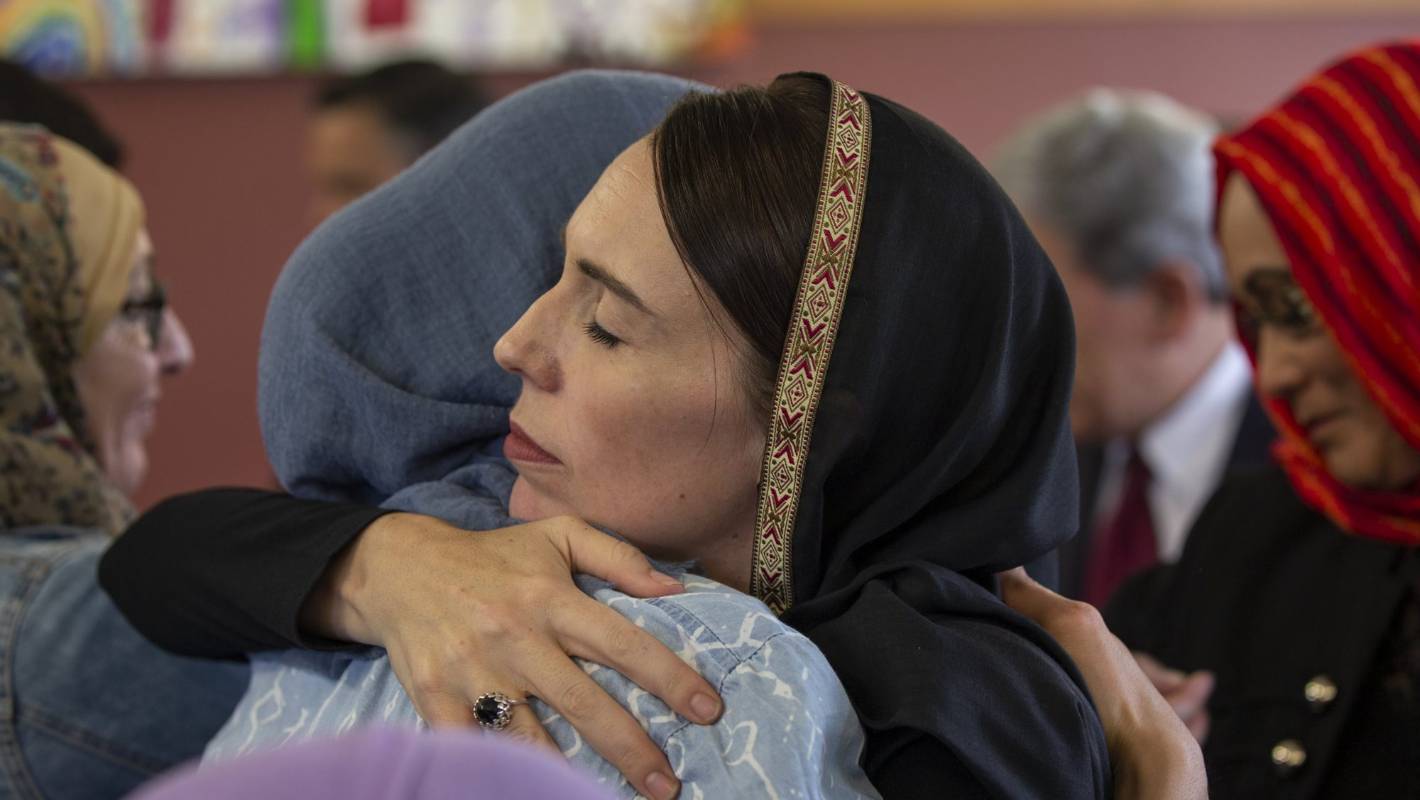
Prime Minister Jacinda Adern comforts grieving muslim community.
Adern would go on to show strong leadership throughout the COVID-19 pandemic, uniting New Zealand with 92% of the nation supporting her measures. She was a role model and outspoken advocate for mothers who work. She passed legislation in favor of climate sustainability. She sought out to cut child poverty and responded to a volcano eruption.
Throughout challenges and crises, her overall approach was to take a “one New Zealand” approach – to understand the need of the whole and create a healthy, sustainable relationship within and outside of the nation.
(One exception to this is her relationship with the indigenous Māori. While she initially made many promises, her response to crises in Māori communities were at-best lackluster and at-worst driven by self-preservation politics).
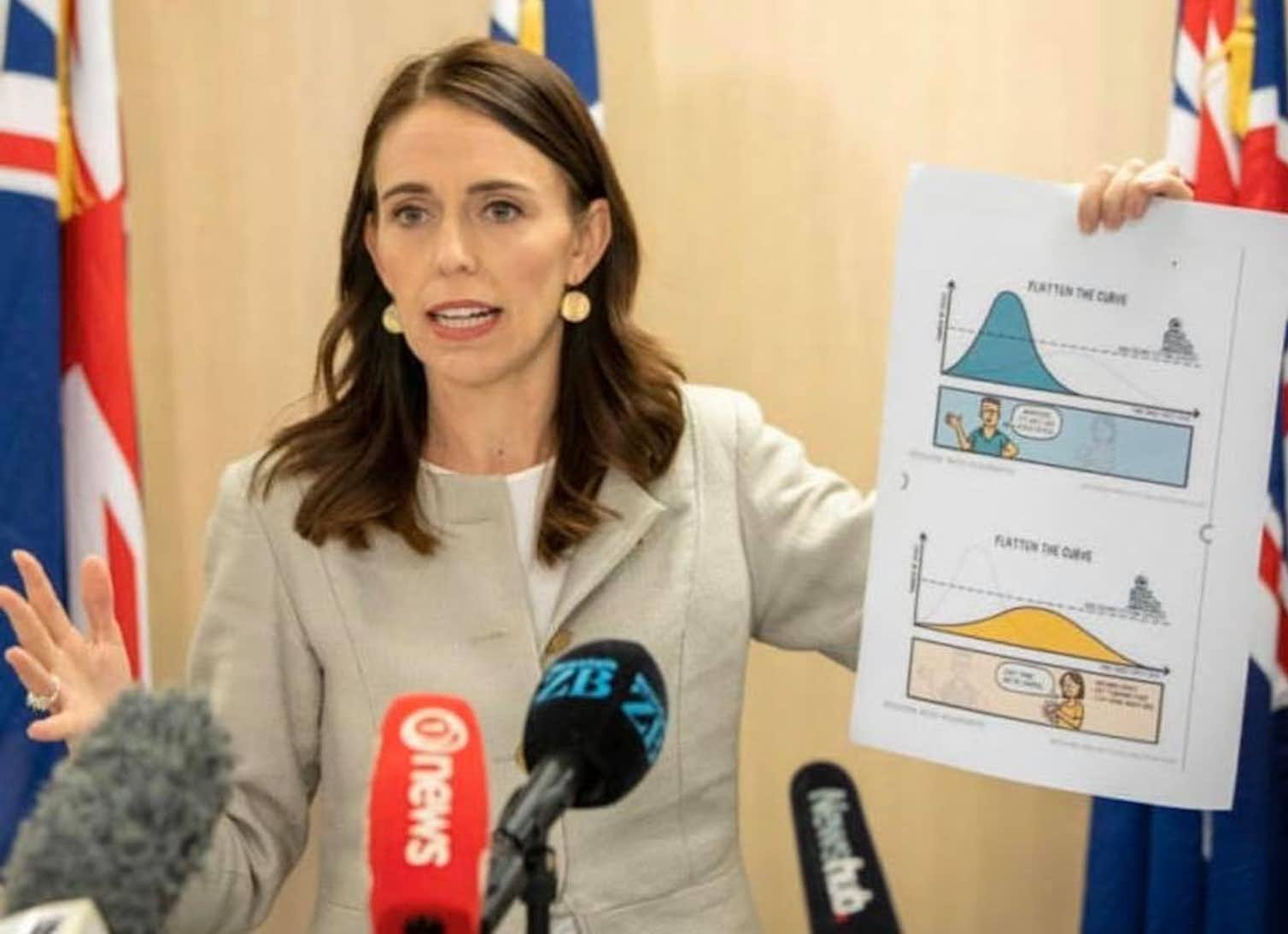
Prime Minister Jacinda Adern communicates during COVID-19 pandemic.
A good leader is hypervigilant about the health of their ecosystem. This includes the physical, emotional, mental hygiene within the organization. The health of relationships between people. The health of the structure and the health of operations. A leader is honest about what is working and what is broken. Looking to the whole and voting in favor of long-term health and sustainability.
A great leader will create a culture of health. A culture in which each person knows what is expected of their values and behaviors in day-to-day activity. Cultures can be functional or cultures can be dysfunctional. Cultures can celebrate and reward positive collaboration or they can create negative, frustrating antagonism.
By creating a truly interdependent culture, leaders invite each person to look beyond themselves and their short-sighted individualistic needs. In true community, the needs of the individual are respected while also encouraged to contribute to the greater project of the whole.
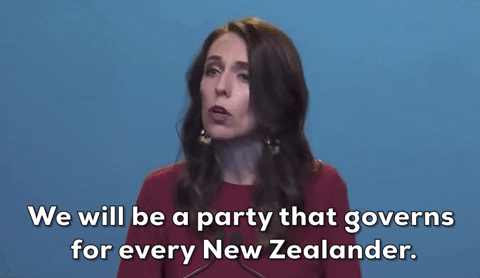
“To me, leadership is not about necessarily being the loudest in the room, but instead being the bridge, or the thing that is missing in the discussion and trying to build a consensus from there.”
- Jacinda Adern
As we look ahead into the 21st century, we believe that the pace of change will continue to increase. Volatility and uncertainty will continue to dominate the workplace. The days of stability, security, predictability are over.
As we continue to experience big disruptions, some universal patterns will likely emerge for leaders:
Self-awareness is the beginning of true leadership. Self-awareness is correlated with greater financial performance. And as volatility increases it is a necessary skill to manage through crisis.
Self-awareness starts with the root: understanding the emotions, the drives, the needs that propel our decision making and behavior. We become aware of our physical stressors, the information of our emotions, and the ideas of our mind. We learn to steer the beautiful sophisticated instrument that is the human body.
From here we can extend outwards to understand the people around us. To develop compassion, empathy and rapport. Perhaps paradoxically, as we become more reliant on technology such as Artificial Intelligence, people skills and emotional intelligence will become competitive advantages in the workforce.
“Know thyself.”
- Socrates
As we continue to create complex and sophisticated systems, our world becomes more abstract. We're no longer working with physical, tangible things like soil or tools that can be picked up and touched and put away.
Instead, we move more and more into cerebral technology. AI, machine learning… leaders will be tasked with having greater abstract reasoning abilities; to think laterally, to think in broad terms, to see patterns.
Think about kicking a ball. The skill can be broken down into a series of steps: planting your foot, jogging up, connecting foot to ball. Knowing how to kick with a certain strength, direction, velocity. For much of human history, we were tasked with learning to kick a ball and performing the action day after day.
Today, it is not enough for leaders to know how to kick a ball. With the ever-changing environment, one day they kick the ball, the next they must throw it, and the next they hit with a golf club.
Learning how to apply lessons across domains, to change with fluidity, to embrace creativity where there are no rules … these will become the tasks of leadership.
“It’s easier for a jazz musician to learn to play classical literature than for a classical player to learn how to play jazz. The jazz musician is a creative artist, the classical musician is a re‑creative artist.”
“It’s an old joke among jazz musicians. You ask, ‘Can you read music?’ And the guy says, ‘Not enough to hurt my playing.’”
- Jack Cecchini
Our world is more interconnected than ever. People have migrated across political boundaries. Climate disruption will create mass movements of people. Diversity is a fact. What we do with that fact is a choice.
People come from different family systems, different background of origin, different cultures. We all have different behaviors and values and assumptions. A leader must understand how to bridge these differences to get the most out of their people. They must work consciously to create harmony across different cultural assumptions and backgrounds and behaviors.
To lead inclusively is to create psychological safety. To understand our unconscious behaviors and make space for reflection. To understand emotions that come up when we are relating and working with people who have a different way of moving forward. Leaders will need to find a new way to create direction and cohesion when cultural conformity is not the default.
“We may have all come on different ships, but we’re in the same boat now.”
- Martin Luther King, Jr.
Leadership is at its best when it services a mission bigger, broader, more important than just the individual. A mature leader looks to pass on an inheritance to future generations. They secure their legacy across time and leave the world a little better than they found it.
Regenerative systems grow over time. They’re built on sound, sustainable principles that strengthen bonds. As a leader, this includes building the leaders of tomorrow. Mentoring, training, equipping others to flourish and take their proper positions when the time is right. Regenerative leaders build organizations that strengthen through change. They are stewards of society and the environment, taking care of natural resources so that our next generation can enjoy and benefit from them.
Conversely when we ignore universal principles, we engage in relationships, organizations and societies that are degenerating. Falling apart; extinguishing and depleting what we have been given by our elders and ancestors.
As we think of the many crises that loom in the 21st century, regeneration is our core existential reckoning. For a leader to navigate through these challenges, they will need to delegate to and empower future leaders, create change-ready organizations, and relate with their ecosystem in a sustainable manner.
“What earth will we leave to our children, and what children will we leave to our earth?”
- Pierre Rabhi
Organizations have a duty to train their leaders in a consistent manner. Otherwise, each person will be left to create their own self-taught playbook.
Leaders across the organization need the same foundational principles, to have a common language, to know what it means to be a leader in this environment. A well-constructed leadership development program will:
Leaders benefit when they know what is expected of their behavior. Defining leadership competencies creates accountability and clarity. It creates cohesion across different teams and functions. Start with: what is a good leader; what do you expect of this leader in this organization? Start with specific behaviors and skills.
Organizations benefit when they clearly articulate their values. Values motivate us while constraining our choices. Well-constructed values help build culture, where a mass of people behave in a similar way without having to overthink it. “These are our rituals; this is our language; this is how it's done here.” Start with defining your culture and the practices that will reinforce it.
Each person and team must build their own awareness by locating themselves relative to these behaviors and values. Individual and team evaluations help build understanding: “Where am I relative to this behavior? Am I far away from it? Am I exhibiting the opposite of what is required?”
Intentionally take individuals and team cohorts through skill building in line with your behaviors and values. For example, if we would like a team to make decisions from a place of neutral mind (instead of stress), we use certain exercises such as meditation and mindfulness to remove emotions from decision making. These are skills that can be learned and woven into an organization’s culture.
Organizations are often siloed and stymie meeting new people, which hampers the ability to learn, get access to resources, and receive social support. Organizations benefit when they bring cohorts together and leaders can meet new people from other pockets of the organization.
Finally, leaders benefit from ongoing support to shift their behavior. Arrange for mentorship and coaching, either internally within the company or from outside coaches. Help identify organizational sponsors who will take an active role in promoting potential successors. Long-term support is critical for embedding and integrating lessons learned.
“Becoming a leader is synonymous with becoming yourself. It is precisely that simple and it is also that difficult.”
- Warren G. Bennis
Leadership is our birthright. Leadership is our gift. To be aware and to adapt.
As we face new challenges – complex challenges and volatile challenges – it is the duty of each one of us to look within and embrace our role as a leader. To take care of each other and the be the stewards of the planet.
Our society has shirked initiations and rituals that once trained us to be leaders. But now - more than ever – it is our task in life to reclaim the process by which we can work together, towards a better future.
We are all leaders, and the time to lead is now.
“A leader is best when people barely know he exists. When his work is done, his aim fulfilled, they will say: we did it ourselves.”
- Lao Tzu
Reading about leadership and implementing its lessons are not the same.
Looking for support? Tell us about your team!

